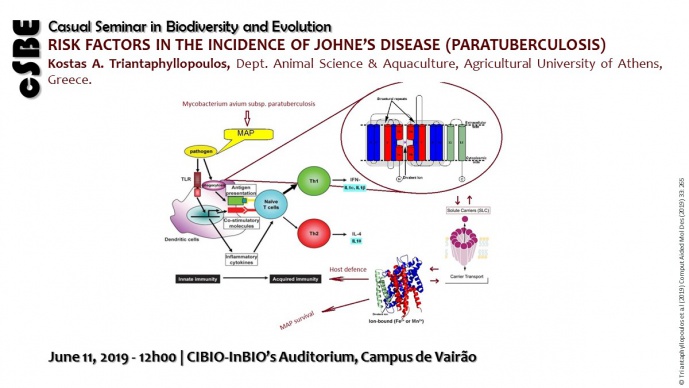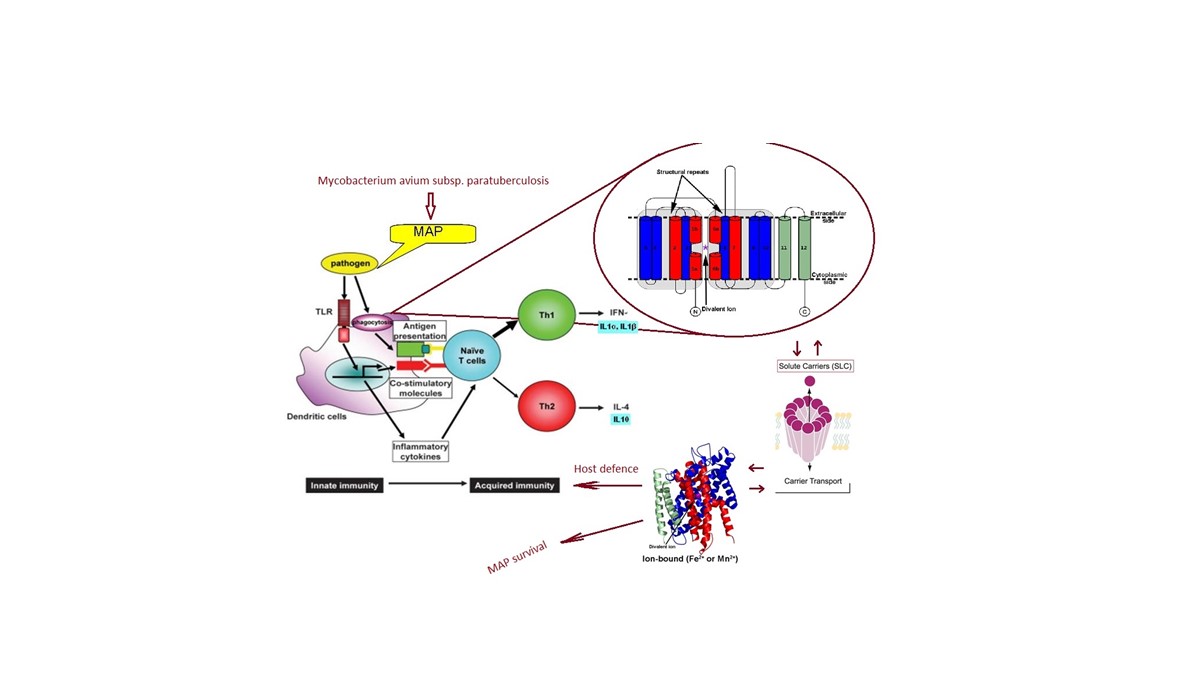RISK FACTORS IN THE INCIDENCE OF JOHNE’S DISEASE (PARATUBERCULOSIS)

CASUAL SEMINAR IN BIODIVERSITY AND EVOLUTION

Paratuberculosis (PTB) is a major animal health and production problem; also due to the rising concerns of its zoonotic importance, it is essential to have deep and complete understanding of the infection biology to design efficacious control strategies for the infection. Due to host modulation by the causative agent, Mycobacterium avium subspecies paratuberculosis (MAP) evading immune system and leading to establishment of the disease and death. Environmental and genetic factors play role in the persistence and spread of MAP and consequently disease. Importantly, significant factors that have emerged and need special emphasis are host genetic susceptibility, with top-affiliated and new candidate genes. We will describe current progress pertinent to the work on Natural resistance-associated macrophage protein (NRAMP1) gene family, represented by the Solute Carrier Family 11 A1 in ruminants, that affecting divalent metals transport through the phagosome membrane, influencing susceptibility to infection by MAP. However, further intense investigation is required to fill in the gaps of knowledge of infection biology in PTB and factors affecting susceptibility to infection by MAP. Given the importance of SLC11A1 in susceptibility to PTB wedid a gene network analysis to confirm its importance as an elite gene, including microarray data from public databases. Furthermore, we studied the structural architecture of SLC11A1 in Capra hircus and Bos taurus through molecular modeling, molecular dynamics simulations in different, functionally relevant configurations, free energy calculations of protein-metal interactions and sequence conservation analysis, to gain 3D structural insight but also suggesting a potential mechanism which divalent metal ion transport is conducted.
PhD holder in Biological Sciences, University of Patras, Dpt. Cellular and Molecular Biology. Thesis title: " Action Spectrum of Cab gene transcription during its stabilization in the thylakoid membrane". Scholarship from the Institute of Biology, National Centre for Scientific Research "Demokritos" and IMBB (Institute of Molecular Biology and Biotechnology) of the University of Crete. Senior research fellow in the UK for 16 years. Lecturer in the position of gene technology, for the Department of Animal Science and Aquaculture, at Agricultural University of Athens, Greece (since 2010). Research interests:
Comparative genomics in farm animals in comparison to the human genome. Next-generation sequencing and application in comparative genomics. Transcriptome of coding and non-coding RNAs, in farm animals. Epigenome and chromatin studies in animal cells. Diversification of genetic (polymorphisms) and protein profile (proteomic profile) in livestock in relation to the potential physiological and productive characteristics, gene regulatory networks and mechanisms involved. Immunological and resistance mechanisms and stress-induced biomarkers investigation involved in relation to the genetic variability of animals and the immunity mechanisms. The effects of parasitic diseases and inflammation or stress, in health and disease for the animals welfare, in relation to their genetic read-out.
[Host: Nuno Ferrand]
Image credits: Triantaphyllopoulos et a.l (2019) Comput Aided Mol Des (2019) 33: 265.